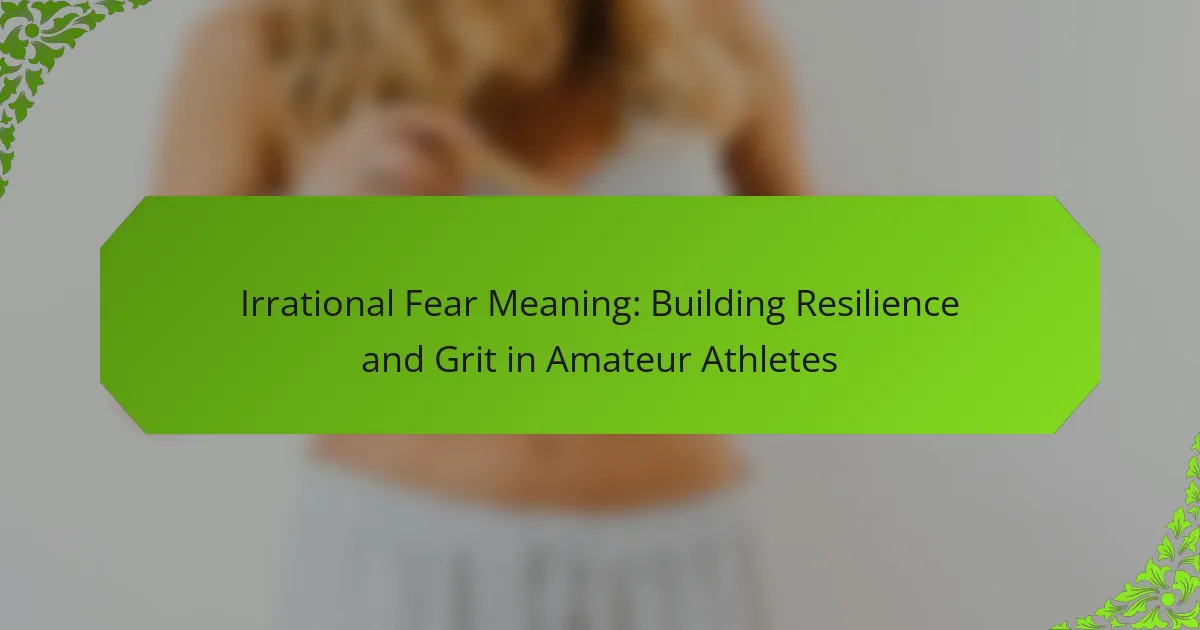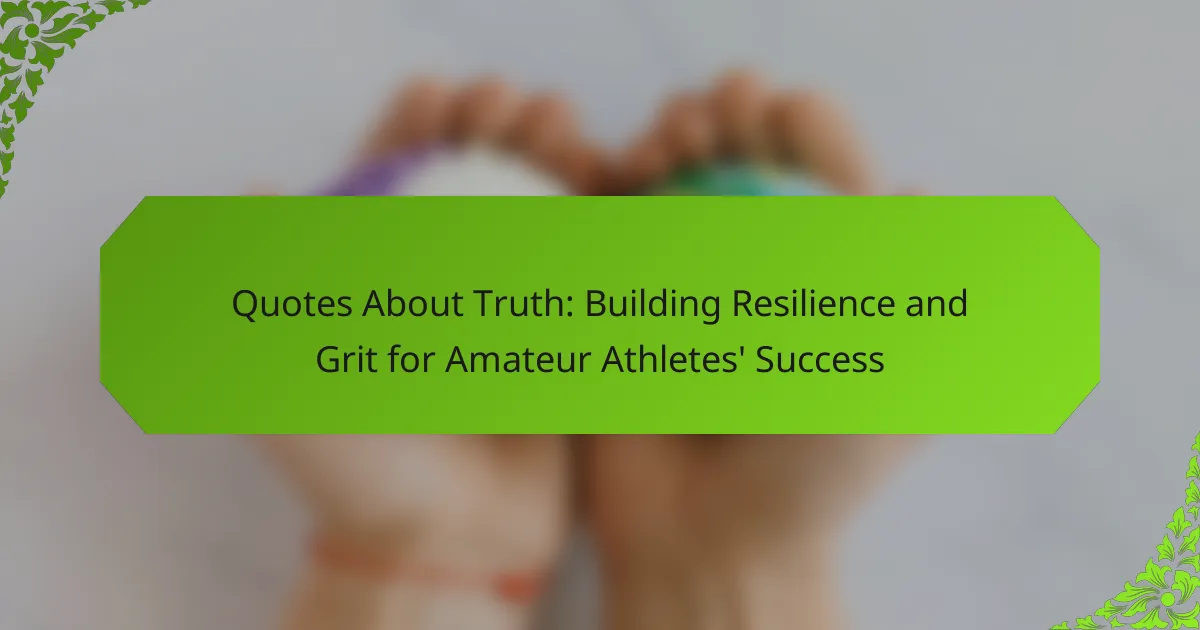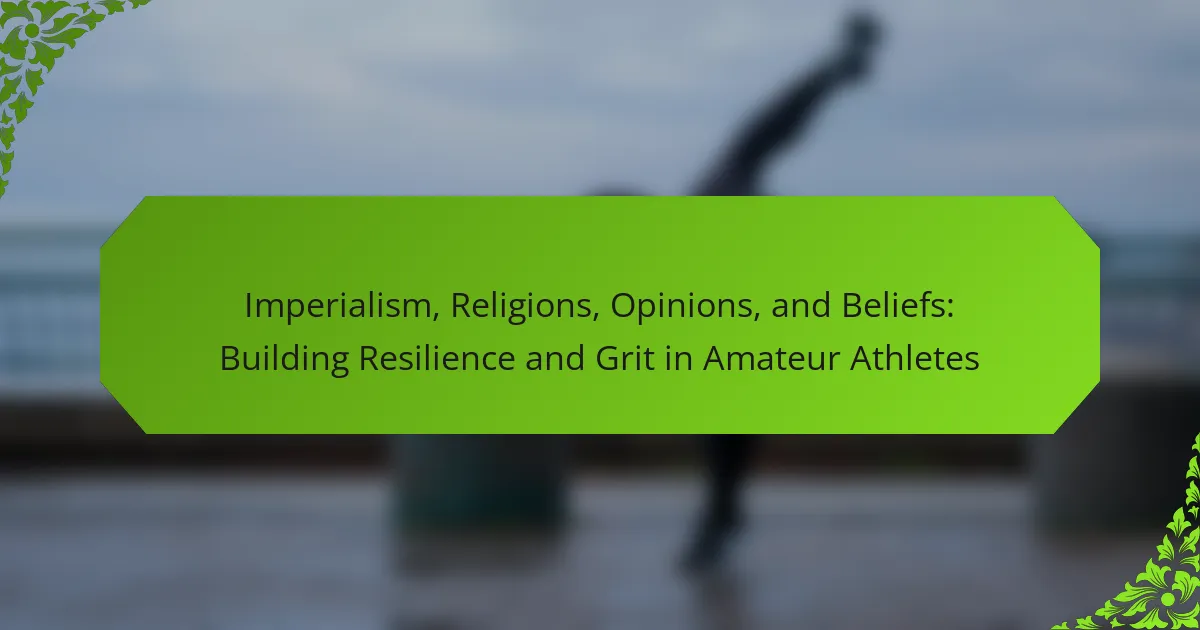Cultivating resilience and grit is crucial for amateur athletes seeking to enhance their performance and overcome challenges. Focus on consistent practice, self-reflection, and goal-setting to develop these essential traits. Incorporate mental conditioning and supportive coaching environments to foster a growth mindset. Avoid common pitfalls like neglecting recovery and failing to set measurable goals to ensure continuous progress.
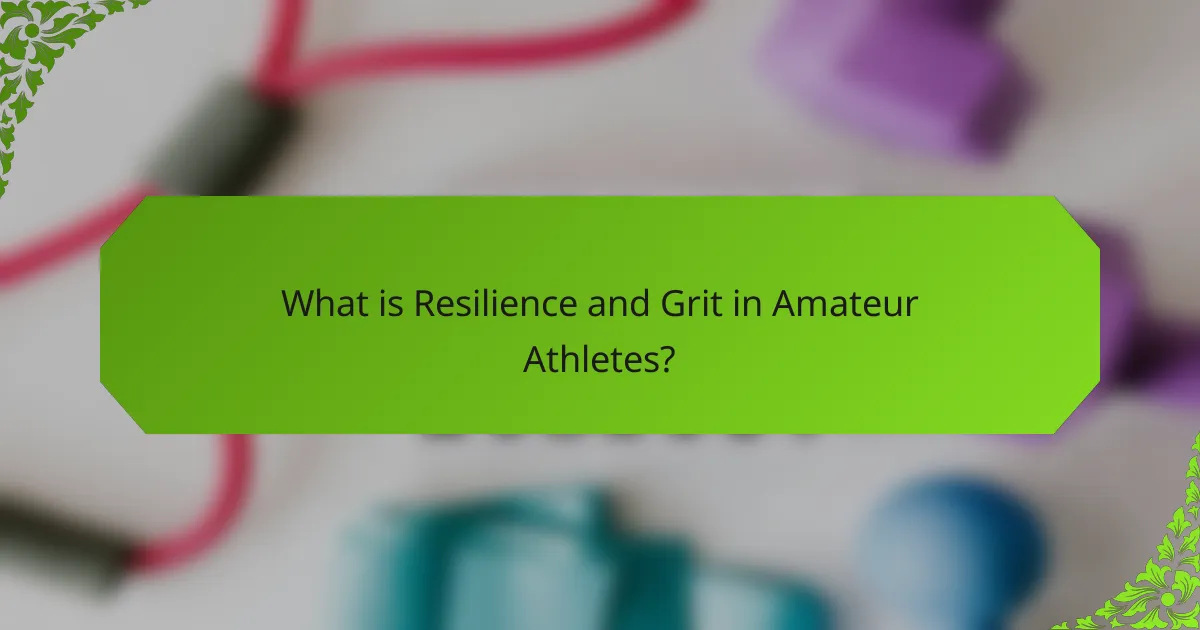
What is Resilience and Grit in Amateur Athletes?
Resilience and grit are essential traits for amateur athletes, enabling them to overcome challenges and persist in their training. Cultivating these attributes involves consistent practice and a positive mindset. Resilient athletes adapt to setbacks, while grit drives them to maintain effort despite difficulties. Research shows that athletes with higher levels of resilience and grit tend to achieve better performance outcomes. These qualities can be developed through goal-setting, visualization techniques, and supportive coaching environments.
How do Resilience and Grit Differ?
Resilience focuses on adapting to challenges, while grit emphasizes perseverance towards long-term goals. Both qualities are essential for amateur athletes, yet they approach difficulties differently. Resilience enables athletes to bounce back from setbacks, whereas grit drives them to maintain effort despite obstacles. Developing both traits can enhance performance and overall mental toughness in sports.
Why are Resilience and Grit Important for Amateur Athletes?
Resilience and grit are crucial for amateur athletes as they foster perseverance and adaptability. These traits enable athletes to overcome setbacks and maintain motivation during challenges. Research indicates that athletes with high resilience can better cope with stress, leading to improved performance. Grit, defined as passion and sustained persistence, encourages long-term commitment to goals. Together, resilience and grit enhance an athlete’s ability to learn from failures and continuously strive for improvement. Cultivating these attributes can significantly impact an athlete’s journey and success in sports.
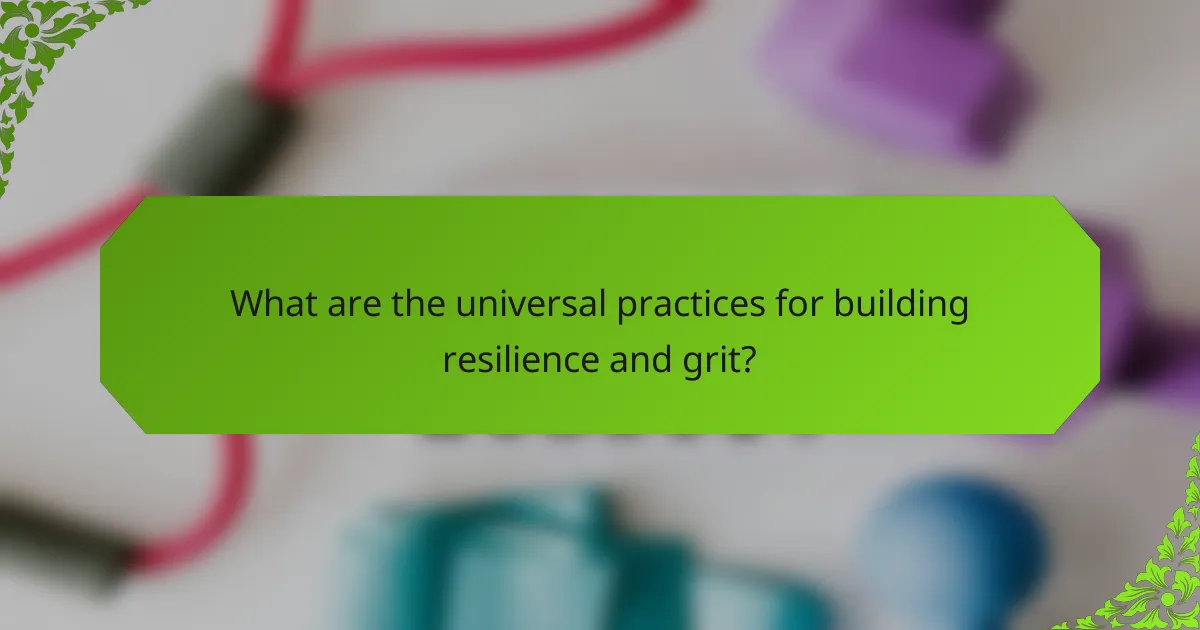
What are the Universal Practices for Building Resilience and Grit?
To cultivate resilience and grit in amateur athletes, focus on consistent practice, self-reflection, and goal setting. These universal practices create a foundation for overcoming challenges and enhancing performance.
Regularly engaging in the same training routines helps athletes build muscle memory and mental toughness. Self-reflection allows athletes to assess their progress and identify areas for improvement. Setting achievable goals fosters motivation and provides a clear direction for development.
Incorporating feedback from coaches and peers can further enhance resilience by promoting a growth mindset. Emphasizing effort over results encourages perseverance, essential for long-term success in sports.
Lastly, fostering a supportive environment among teammates can strengthen emotional resilience, creating a culture that values hard work and determination.
How Can Goal Setting Enhance Resilience?
Goal setting enhances resilience by providing clear objectives and a structured approach to overcoming challenges. It fosters a growth mindset, enabling amateur athletes to adapt and persist despite setbacks. This process cultivates grit, as athletes learn to embrace difficulties as opportunities for improvement. Studies show that individuals with defined goals are more likely to develop coping strategies, leading to increased mental toughness and a higher likelihood of success in their pursuits.
What Role Does Positive Self-Talk Play?
Positive self-talk enhances resilience and grit in amateur athletes by fostering a growth mindset. It encourages individuals to focus on their strengths and potential rather than limitations. Research indicates that positive self-talk can improve performance, reduce anxiety, and increase motivation. This mental strategy helps athletes to overcome challenges and persist despite setbacks. By cultivating a habit of positive self-talk, athletes can develop a unique attribute of mental toughness, essential for achieving long-term success in their sport.
How Does Consistent Training Foster Grit?
Consistent training fosters grit by building mental resilience through repeated challenges. This process helps amateur athletes develop a growth mindset, enabling them to persevere despite setbacks. Regular practice instills discipline, which is essential for overcoming obstacles. As a result, athletes learn to embrace discomfort, ultimately strengthening their determination and commitment to improvement.
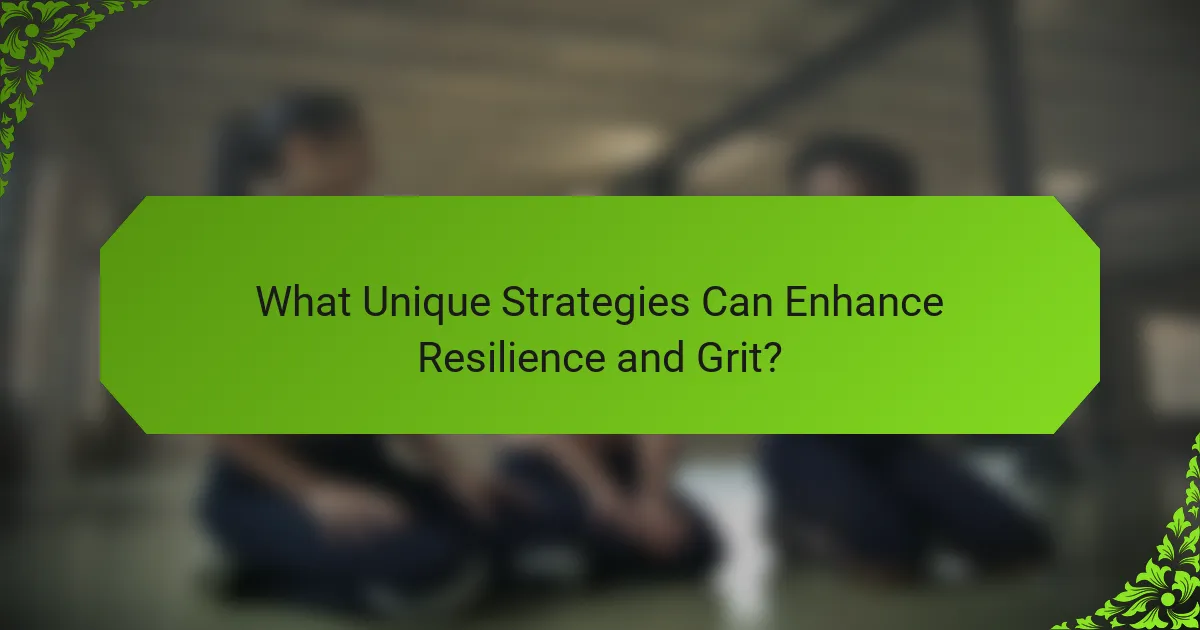
What Unique Strategies Can Enhance Resilience and Grit?
Developing resilience and grit in amateur athletes requires unique strategies that promote mental toughness. Incorporating goal-setting, positive self-talk, and visualization techniques can significantly enhance these traits.
1. Goal-setting: Establish clear, achievable objectives to foster a sense of purpose and direction.
2. Positive self-talk: Encourage athletes to replace negative thoughts with affirmations to build confidence and perseverance.
3. Visualization: Use mental imagery to prepare for challenges, helping athletes envision success and overcome obstacles.
4. Consistent practice: Regularly engage in challenging situations to build adaptability and strengthen resilience.
5. Support systems: Foster connections with coaches and peers to create a network of encouragement and accountability.
How Can Visualization Techniques Improve Performance?
Visualization techniques can significantly enhance performance by fostering mental resilience and grit in amateur athletes. These techniques allow athletes to mentally rehearse their skills, improving focus and confidence. For instance, visualizing successful outcomes can reduce anxiety and enhance motivation. Studies show that athletes who regularly use visualization report higher levels of resilience, enabling them to persist through challenges. Furthermore, incorporating visualization into training routines can lead to measurable improvements in performance metrics, such as speed and accuracy.
What is the Impact of Mentorship on Grit Development?
Mentorship significantly enhances grit development in amateur athletes. It provides guidance, emotional support, and accountability, fostering resilience and perseverance. Mentors share experiences and strategies, helping athletes navigate challenges. This relationship cultivates a growth mindset, essential for overcoming obstacles and achieving goals. Research indicates that athletes with mentors demonstrate higher levels of grit and better performance outcomes.

What Rare Practices Can Provide a Competitive Edge?
Cultivating resilience and grit in amateur athletes can provide a competitive edge through rare practices. These practices include mental conditioning, unconventional training methods, and personalized goal-setting strategies. Mental conditioning enhances focus and determination, allowing athletes to overcome challenges. Unconventional training methods, such as cross-training or incorporating mindfulness, can improve performance and adaptability. Personalized goal-setting strategies ensure athletes remain motivated and accountable, fostering a growth mindset essential for long-term success. Implementing these rare practices can significantly enhance an athlete’s ability to thrive in competitive environments.
How Can Journaling Foster Emotional Resilience?
Journaling can significantly enhance emotional resilience by providing a structured outlet for thoughts and feelings. This practice helps amateur athletes process experiences, identify patterns, and develop coping strategies.
Writing regularly fosters self-reflection, allowing individuals to confront challenges and articulate emotions. As a result, athletes build grit and adaptability, essential traits for overcoming setbacks. Research indicates that expressive writing can reduce anxiety and improve mood, further supporting resilience.
Incorporating journaling into training routines encourages consistency and discipline, reinforcing the mindset needed for personal growth. This unique attribute of journaling transforms emotional struggles into opportunities for development, ultimately benefiting athletic performance.
What Unique Recovery Techniques Can Build Grit?
Unique recovery techniques that build grit include mindfulness practices, visualization strategies, and adaptive goal-setting. Mindfulness enhances self-awareness and emotional regulation, fostering resilience. Visualization helps athletes mentally prepare for challenges, reinforcing their commitment. Adaptive goal-setting encourages flexibility, allowing athletes to adjust their objectives based on performance feedback, which solidifies their determination.
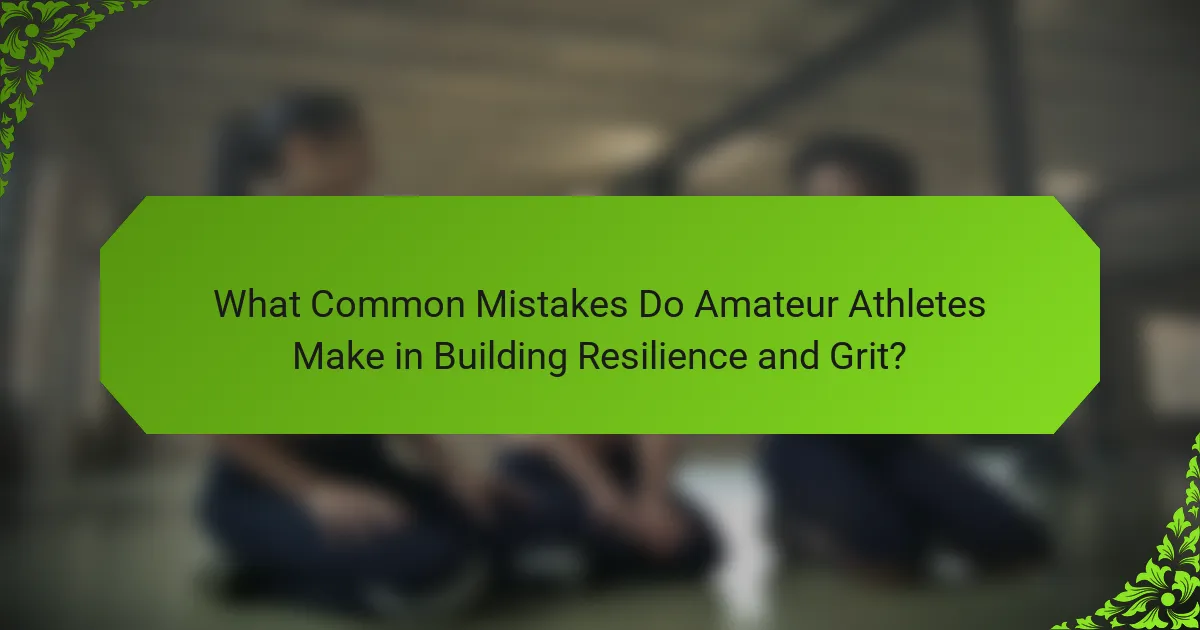
What Common Mistakes Do Amateur Athletes Make in Building Resilience and Grit?
Amateur athletes often make the mistake of repeating ineffective training methods, expecting different outcomes in resilience and grit. This lack of adaptation hinders progress and can lead to burnout.
One common error is neglecting recovery. Athletes may push through fatigue, believing it builds toughness, but this can actually diminish performance and resilience.
Another mistake is failing to set specific, measurable goals. Without clear objectives, athletes cannot track their progress or adjust strategies effectively, stunting their development of grit.
Lastly, many amateur athletes overlook the importance of mental training. They focus solely on physical aspects, ignoring techniques like visualization and positive self-talk that enhance resilience.
How Can Overtraining Undermine Resilience?
Overtraining can significantly undermine resilience by leading to physical and mental fatigue. This fatigue reduces an athlete’s ability to cope with stress and adapt to challenges. As a result, athletes may experience decreased performance, motivation, and overall well-being. Overtraining symptoms, such as chronic fatigue and mood swings, can further hinder an athlete’s grit, making it difficult to push through obstacles. In contrast, balanced training fosters resilience, allowing athletes to recover and grow stronger.
What Are the Pitfalls of a Fixed Mindset?
A fixed mindset limits growth and resilience, leading to repeated mistakes. Amateur athletes may struggle with adaptability, hindering performance. This mindset fosters fear of failure, discouraging risk-taking and experimentation. As a result, athletes miss opportunities for improvement and development, ultimately stifling their potential.
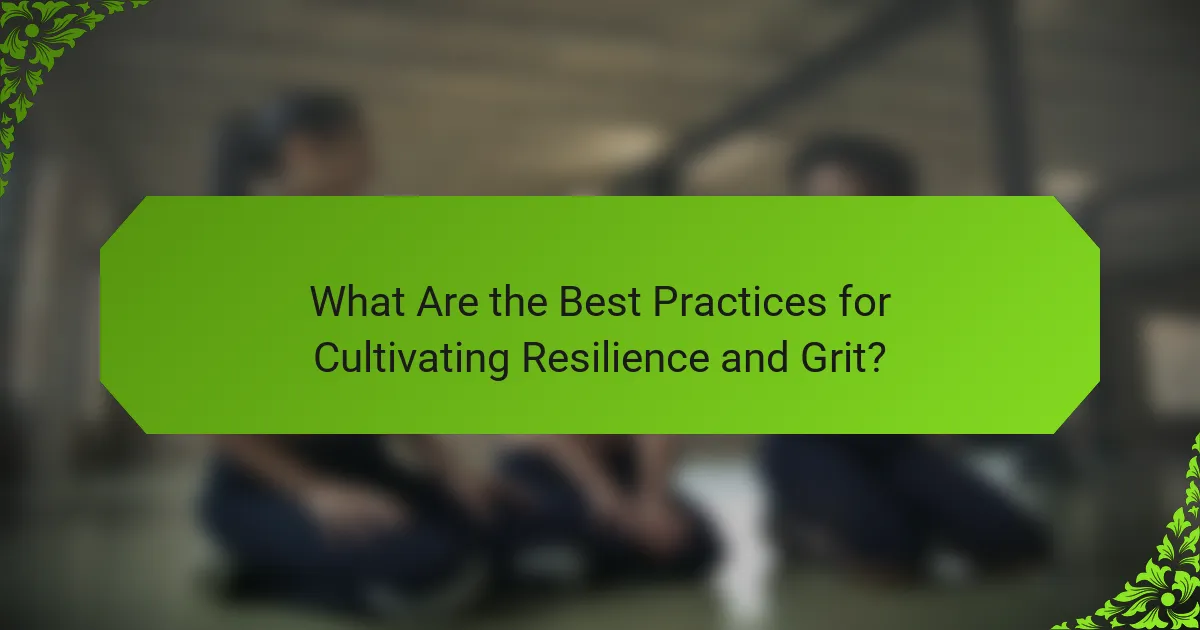
What Are the Best Practices for Cultivating Resilience and Grit?
To cultivate resilience and grit in amateur athletes, focus on consistent practice, goal setting, and mental conditioning. Developing a growth mindset enhances perseverance, while regular feedback fosters improvement. Encourage reflection on challenges to build adaptive strategies. Emphasizing progress over perfection reinforces motivation and resilience.
How Can Athletes Create a Supportive Environment?
Athletes can create a supportive environment by fostering open communication, encouraging teamwork, and promoting positive reinforcement. These elements cultivate resilience and grit, essential traits for amateur athletes. Open communication allows athletes to express concerns and share experiences, building trust within the team. Encouraging teamwork enhances collaboration and helps athletes learn from each other. Positive reinforcement boosts motivation and self-esteem, leading to improved performance and a stronger collective mindset. By integrating these practices, athletes can significantly enhance their training environment.
What Daily Habits Foster Long-Term Resilience?
Daily habits that foster long-term resilience include consistent training, maintaining a growth mindset, and prioritizing recovery. These practices help amateur athletes develop grit and adaptability.
Consistent training builds physical and mental stamina, reinforcing the ability to face challenges. A growth mindset encourages athletes to view setbacks as opportunities for learning. Prioritizing recovery, including sleep and nutrition, supports overall well-being and performance.
Incorporating these habits not only enhances athletic performance but also cultivates resilience in various life aspects. By focusing on these attributes, amateur athletes can achieve sustainable progress and long-term success.
How Can Feedback Loops Enhance Grit Development?
Feedback loops significantly enhance grit development by providing athletes with continuous opportunities for reflection and improvement. These loops encourage a growth mindset, allowing amateur athletes to learn from failures and adapt their strategies. By regularly assessing performance and integrating feedback, athletes build resilience and persistence, essential components of grit. This iterative process fosters a sense of ownership over their development, making them more likely to push through challenges and setbacks. Ultimately, effective feedback loops cultivate a deeper commitment to long-term goals and personal growth in amateur athletes.
